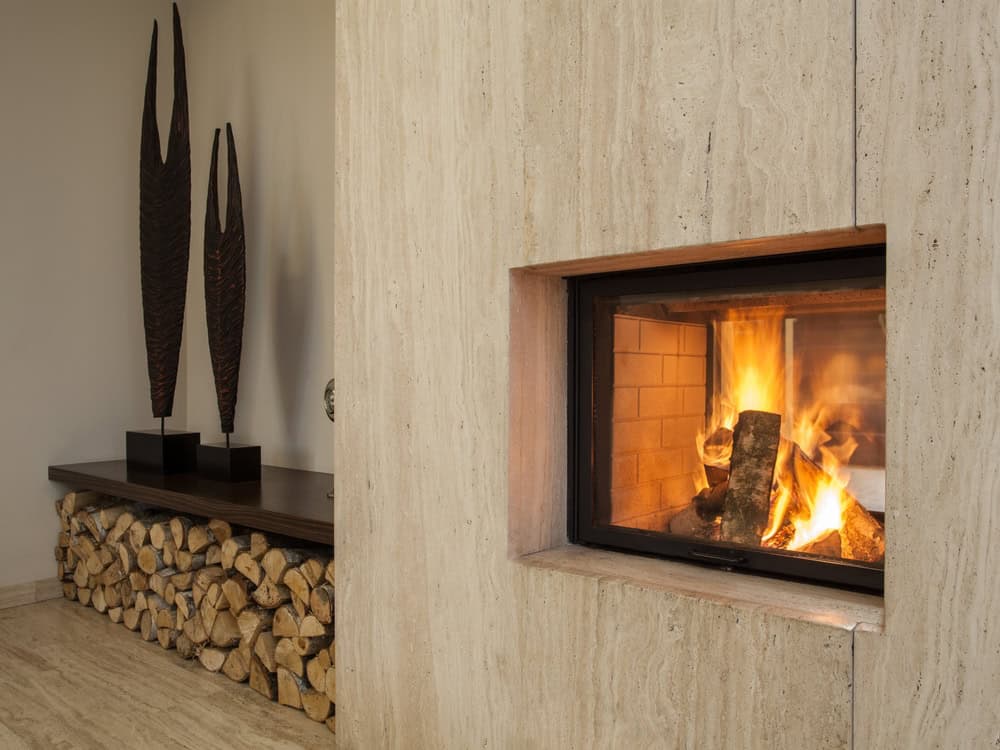
Summary:
Your chimney and heating system work as a team. When your chimney liner develops cracks, loose mortar, or structural issues, it disrupts the entire process that keeps your home warm efficiently.
Think of it this way: your heating system creates heat, but your chimney controls how that heat moves through your home and exits safely. When the chimney can’t do its job properly, your heating system compensates by running longer and harder—using more fuel to achieve the same temperature.
Those hairline cracks in your chimney’s brick or stone aren’t just cosmetic issues. They’re creating pathways for heat to escape directly through your chimney walls instead of warming your living space.
Providence County, RI’s freeze-thaw cycles make this problem worse every year. Water gets into small cracks, freezes, expands, and creates bigger cracks. Each winter, more heat finds its way out through these gaps instead of circulating through your home.
The math is simple but painful. If 15-20% of your heat is escaping through damaged chimney masonry, your heating system needs to produce 15-20% more heat to maintain the same indoor temperature. That shows up directly on your energy bill.
What makes this particularly frustrating is that you’re paying for heat you never feel. Your thermostat registers the lower temperature and signals your heating system to keep running. You end up burning more fuel to replace the heat that’s literally disappearing into the walls of your damaged chimney. Professional chimney masonry repair addresses these cracks before they become major efficiency drains.
Those hairline cracks in your chimney’s brick or stone aren’t just cosmetic issues. They’re creating pathways for heat to escape directly through your chimney walls instead of warming your living space.
Providence County, RI’s freeze-thaw cycles make this problem worse every year. Water gets into small cracks, freezes, expands, and creates bigger cracks. Each winter, more heat finds its way out through these gaps instead of circulating through your home.
The math is simple but painful. If 15-20% of your heat is escaping through damaged chimney masonry, your heating system needs to produce 15-20% more heat to maintain the same indoor temperature. That shows up directly on your energy bill.
What makes this particularly frustrating is that you’re paying for heat you never feel. Your thermostat registers the lower temperature and signals your heating system to keep running. You end up burning more fuel to replace the heat that’s literally disappearing into the walls of your damaged chimney. Professional chimney masonry repair addresses these cracks before they become major efficiency drains.
Want live answers?
Connect with a Certified Chimney Inspections expert for fast, friendly support.
Water and heating systems don’t mix well. When your chimney develops leaks—whether through damaged flashing, cracked crown, or deteriorated masonry—that water doesn’t just damage your chimney structure.
It creates ongoing problems that directly impact how efficiently your heating system operates. Moisture changes everything about how heat moves through your chimney and home.
Water from leaking chimney flashing or damaged masonry doesn’t stay put. It travels down through your chimney structure, often reaching areas around your heating system or fireplace insert.
When water damages insulation around your chimney or heating components, you lose the thermal barrier that keeps heat moving in the right direction. Wet insulation performs terribly—sometimes losing 50% or more of its insulating value. Heat that should warm your home instead gets absorbed by damp materials or escapes through compromised barriers.
Water also creates air leaks as it damages seals and gaskets around your heating system components. These leaks allow cold outside air to enter your system while letting heated air escape. Your heating system ends up working against a constant influx of cold air that it needs to warm up before it can actually heat your living space.
The moisture problems compound over time. What starts as a small leak from damaged chimney flashing becomes a cycle of water damage that affects more and more of your heating system’s efficiency. Each heating season, you’re fighting against more water damage and less effective insulation. This is why we help Providence County homeowners fix leaking chimney issues before they spread.
Chimney flashing—the metal barrier where your chimney meets your roof—takes a beating from Rhode Island weather. When flashing fails, water pours directly into the most critical areas of your heating system setup.
Failed flashing doesn’t just create obvious water damage. It allows moisture to reach areas where it disrupts your heating system’s ability to operate efficiently. Water around your chimney base can damage the connection points between your heating system and chimney, creating gaps that let heat escape and cold air enter.
The efficiency loss from flashing problems builds gradually. You might notice your heating system running longer cycles or struggling to maintain consistent temperatures. Meanwhile, water from the damaged flashing is systematically undermining the thermal barriers and airflow systems your heating efficiency depends on.
We can identify flashing problems before they create major efficiency losses. New flashing installation costs far less than the accumulated energy waste from a leaking system, especially when you factor in the potential damage to your heating system components.
Your chimney problems won’t fix themselves, and they’ll cost you more money every month you wait. Damaged masonry, leaking flashing, and deteriorated flue liners directly impact your heating bills while creating safety risks for your family.
The good news is that professional chimney masonry repair and leaking chimney repair can restore your heating system’s efficiency while protecting your home investment. When you’re ready to stop paying for heat you’re not getting, we can assess your chimney’s condition and recommend the repairs that will make the biggest difference in your heating performance.